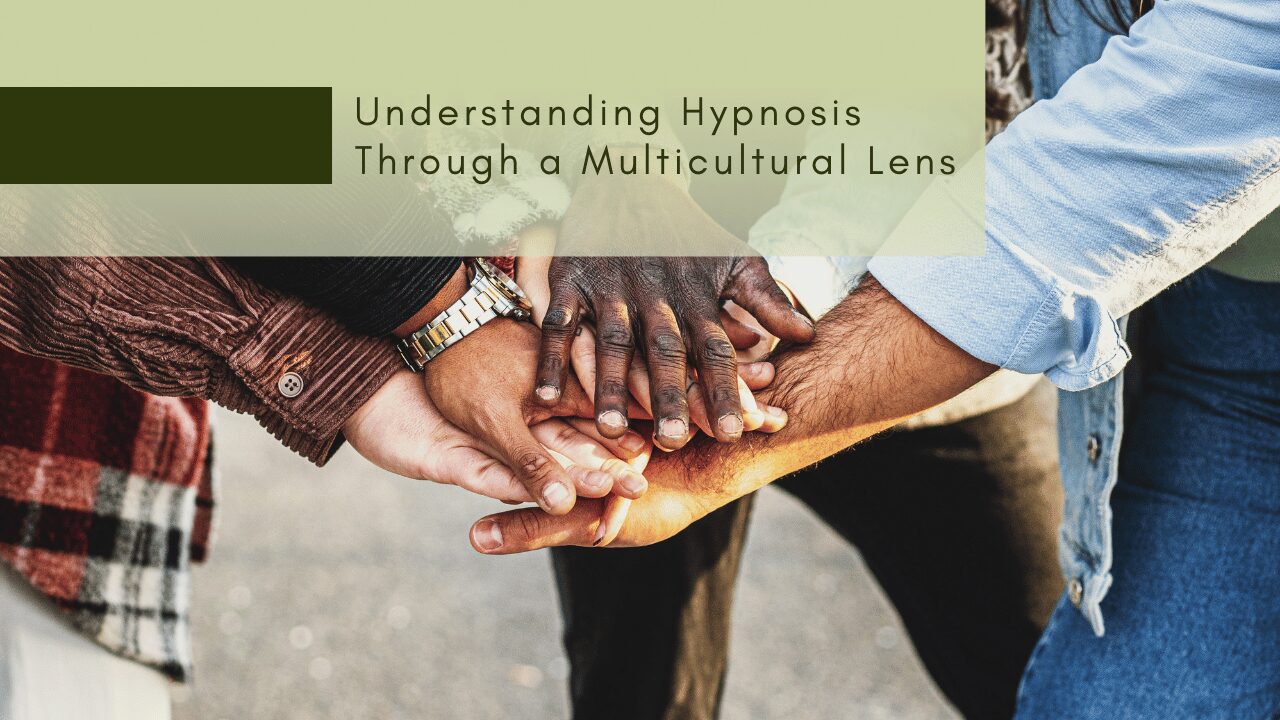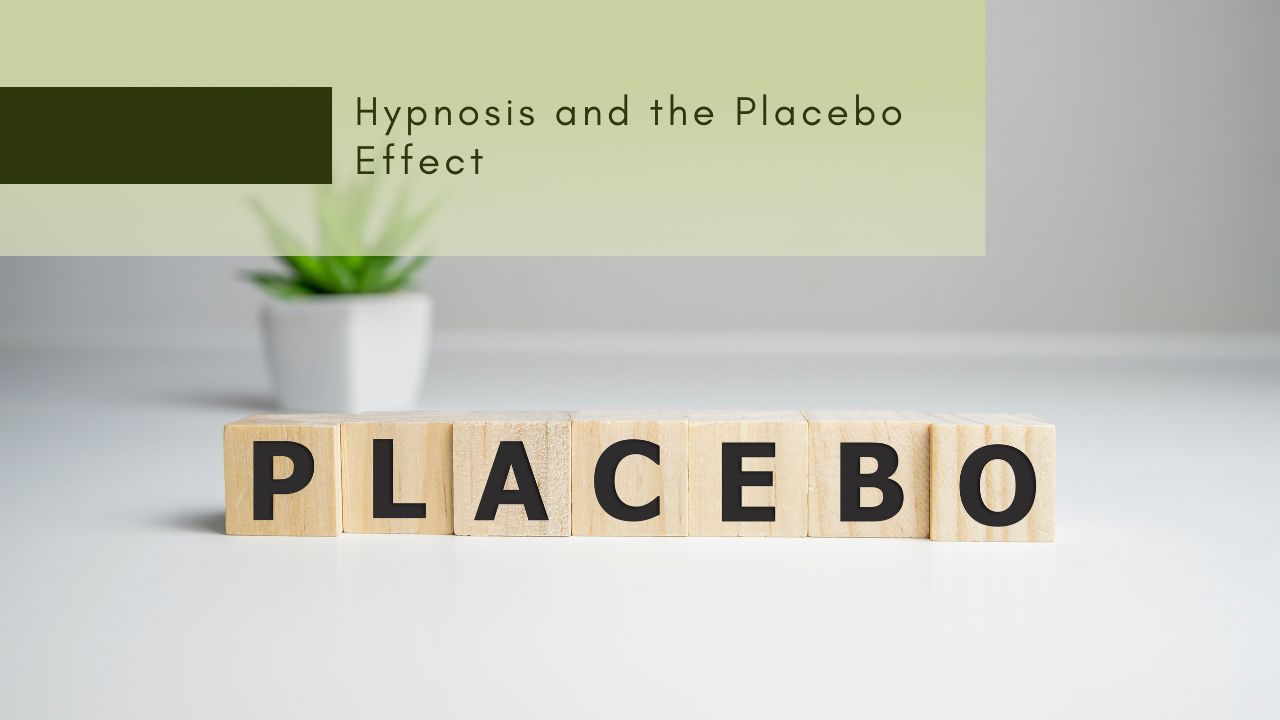Hypnosis, often depicted in popular culture, holds a unique place in many cultures around the world. This article explores the concept of hypnosis beyond its Western medical context, examining its diverse applications and interpretations across different societies.
How do the methods, rituals, or techniques of inducing trance states vary in different cultural contexts?
The methods, rituals, and techniques used to induce trance states vary widely across different cultural contexts, reflecting the unique beliefs, traditions, and practices of each society. The following are some examples of how trance induction varies:
Ritualistic Drumming and Chanting
Many cultures use rhythmic drumming, chanting, or singing as a method of inducing trance states. The repetitive nature of these auditory stimuli can alter consciousness and facilitate the entry into trance. Examples include the use of drum circles in African and Native American traditions or chanting in Hindu and Buddhist meditation practices.
Dance and Movement
Ritualistic dance and movement are common methods of inducing trance states in many cultures. The rhythmic movements, combined with intense focus and concentration, can lead to altered states of consciousness. Examples include the whirling dervishes of Sufi Islam, the ecstatic dance practices of certain African and indigenous cultures, and the martial arts traditions of East Asia.
Breathwork and Meditation
Techniques involving controlled breathing and meditation are used to induce trance states in many cultural contexts. Practices such as pranayama in yoga, qigong in Chinese medicine, and mindfulness meditation in Buddhism all involve regulating the breath and focusing the mind to alter consciousness.
Sensory Deprivation or Overload
Some cultures use techniques involving sensory deprivation or overload to induce trance states. For example, prolonged fasting, isolation in dark caves, or exposure to intense sensory stimuli like loud noise or bright lights can disrupt ordinary consciousness and facilitate entry into altered states.
Guided Imagery and Visualization
Cultures with strong traditions of storytelling and imagery may use guided imagery and visualization techniques to induce trance states. Guided journeys, storytelling rituals, or guided meditation practices often involve vivid imagery and symbolic language to evoke altered states of consciousness.
Use of Psychoactive Substances
In some cultures, psychoactive substances such as ayahuasca, peyote, or psychedelic mushrooms are used to induce trance states and facilitate spiritual experiences. These substances alter brain chemistry and perception, leading to profound alterations in consciousness that are often accompanied by spiritual insights or healing experiences.
Physical Manipulation and Ritual Acts
Certain cultures use physical manipulation or ritual acts to induce trance states. This can include practices such as massage, acupuncture, or ritualized body piercings, which can induce altered states of consciousness through the release of endorphins, stimulation of energy meridians, or symbolic acts of transformation.
The above show examples of the diverse methods, rituals, and techniques used to induce trance states across different cultural contexts. Each culture has its own unique approach to altering consciousness, shaped by its history, beliefs, and social practices.
Are there particular cultural taboos, stigmas, or ethical considerations surrounding the practice of hypnosis in certain societies?
Cultural taboos, stigmas, and ethical considerations surrounding the practice of hypnosis can vary across societies. The following are some examples:
Religious Taboos
In cultures with strong religious beliefs, hypnosis may be viewed with suspicion or skepticism, particularly if it is perceived as interfering with divine will or spiritual principles. Some religious groups may consider hypnosis to be incompatible with their faith or even forbidden, leading to stigmatization or avoidance of hypnotic practices.
Mental Health Stigma
Cultures with stigma surrounding mental health issues may also stigmatize hypnosis, particularly if it is associated with therapy or psychological treatment. Individuals may fear being labeled as “mentally ill” or “weak” if they seek out hypnosis for personal or emotional issues, leading to reluctance to engage with hypnotic techniques.
Perceptions of Mind Control
In societies where autonomy and individual freedom are highly valued, hypnosis may be stigmatized or feared due to perceptions of mind control or manipulation. Individuals may worry about losing control over their thoughts or actions under hypnosis, leading to distrust of hypnotic practitioners and techniques.
Cultural Beliefs About Suggestibility
Cultures that value critical thinking and skepticism may view hypnosis as a form of suggestibility or susceptibility to manipulation, rather than a legitimate therapeutic tool. This perception can contribute to the stigmatization of hypnosis and reluctance to engage with hypnotic techniques.
Ethical Concerns About Consent and Power Dynamics
In all societies, ethical considerations surrounding consent and power dynamics are important in the practice of hypnosis. There may be cultural norms or legal regulations governing informed consent, confidentiality, and boundaries in hypnotherapy sessions. Failure to adhere to these ethical standards can lead to stigmatization of hypnosis and damage public trust in the practice.
Historical Context
Cultural attitudes toward hypnosis may also be influenced by historical events or cultural narratives. For example, in some societies, hypnosis may be associated with negative historical events or fictional portrayals in popular media, leading to stigmatization or fear of hypnotic techniques.
In summary, cultural taboos, stigmas, and ethical considerations surrounding hypnosis can vary widely across societies, influenced by religious beliefs, social norms, historical context, and perceptions of mental health and autonomy.
How do the roles and expectations of the hypnotist or facilitator differ across cultural traditions?
The roles and expectations of the hypnotist or facilitator can vary significantly across cultural traditions, reflecting the diverse beliefs, values, and social norms of each society. The following are some ways in which these roles may differ:
Authority and Trust
In some cultures, the hypnotist or facilitator is viewed as an authority figure with special knowledge or powers, and their role is to guide and facilitate the hypnotic experience. Individuals may place a high level of trust in the hypnotist’s abilities and follow their instructions implicitly. In other cultures, there may be more skepticism or distrust toward authority figures, and the role of the hypnotist may be less central or authoritative.
Healer or Shamanic Practitioner
In cultures with strong healing traditions, the hypnotist may be seen as a healer or shamanic practitioner who uses hypnosis as a tool for spiritual healing and transformation. Their role may involve accessing spiritual realms, communicating with ancestors or spirits, and facilitating the resolution of emotional or physical issues through trance-like states.
Guide or Facilitator
In many cultural traditions, the role of the hypnotist is more akin to a guide or facilitator who helps individuals access their own inner resources and wisdom. The hypnotist’s role is to create a safe and supportive environment, provide suggestions and guidance, and facilitate the individual’s journey into altered states of consciousness.
Cultural Sensitivity and Adaptation
The role of the hypnotist may also involve cultural sensitivity and adaptation to the beliefs, values, and preferences of the cultural context. Hypnotists may need to tailor their approach to accommodate cultural norms, beliefs about healing and spirituality, and expectations surrounding the therapeutic process.
Community Involvement
In some cultural traditions, hypnosis may be practiced within a communal or group context, with multiple individuals participating in the hypnotic experience together. The role of the hypnotist in these contexts may involve facilitating group dynamics, guiding collective experiences, and fostering a sense of community and connection.
Ethical Responsibilities
Regardless of cultural context, the role of the hypnotist carries ethical responsibilities related to informed consent, confidentiality, and respect for the individual’s autonomy and well-being. Culturally competent hypnotists understand and adhere to ethical standards while navigating the complexities of cultural differences and expectations.
The roles and expectations of the hypnotist or facilitator are deeply influenced by cultural traditions, beliefs about healing and spirituality, social norms, and ethical considerations. Understanding and respecting these cultural differences is essential for effectively practicing hypnosis in diverse cultural contexts.
What are the common or distinct purposes for which hypnosis is utilized in various cultural settings (e.g., healing, entertainment, spiritual)?
Hypnosis is utilized for various purposes in different cultural settings, reflecting the diverse beliefs, values, and traditions of each society. Here are some common or distinct purposes for which hypnosis is utilized across cultural settings:
Healing and Therapy
One of the primary purposes of hypnosis across cultures is healing and therapy. Hypnosis may be used to address a wide range of physical, emotional, and psychological issues, including pain management, stress reduction, anxiety, trauma recovery, and habit change. In some cultural traditions, hypnosis is integrated into traditional healing practices, such as traditional Chinese medicine, Ayurveda, or indigenous healing ceremonies.
Spiritual and Shamanic Practices
In many cultures, hypnosis is used as a tool for spiritual exploration, transformation, and healing. Hypnotic techniques may be integrated into shamanic rituals, meditation practices, or spiritual ceremonies to induce altered states of consciousness, facilitate communication with spirits or ancestors, and access higher levels of awareness. Hypnosis may also be used to explore past lives, connect with spiritual guides, or deepen one’s spiritual journey.
Entertainment and Performance
In some cultural contexts, hypnosis is primarily used for entertainment purposes, such as stage shows or street performances. Hypnotists may showcase the power of suggestion and suggestibility in a lighthearted and entertaining manner, hypnotizing volunteers to perform amusing or dramatic acts under hypnosis. While entertainment hypnosis may not have therapeutic goals, it can still provide insights into the power of the mind and human suggestibility.
Self-Exploration and Personal Growth
Across cultures, hypnosis is also used for self-exploration, personal growth, and self-improvement. Individuals may use self-hypnosis techniques to access their inner resources, overcome limiting beliefs, enhance creativity, or achieve personal goals. Hypnosis can provide a powerful tool for self-awareness, empowerment, and transformation in various cultural settings.
Cognitive Enhancement and Performance Optimization
In some cultural contexts, hypnosis is utilized to enhance cognitive abilities, improve performance, and optimize human potential. Athletes, performers, and professionals may use hypnosis to increase focus, confidence, and motivation, leading to improved performance in their respective fields. Hypnosis may also be used to enhance memory, learning, and problem-solving skills.
Pain Management and Medical Applications
Hypnosis is often used in medical settings across cultures for pain management, anesthesia, and complementary healthcare. Hypnotic techniques may be used to alleviate acute or chronic pain, reduce the need for medication, and enhance the healing process after surgery or injury. Hypnosis is increasingly recognized as a valuable adjunctive therapy in mainstream healthcare settings worldwide.
In summary, hypnosis serves a wide range of purposes in various cultural settings, including healing, entertainment, spiritual exploration, personal growth, cognitive enhancement, and medical applications. Its versatility and effectiveness make it a valuable tool for addressing diverse human needs and experiences across different cultures and societies.
How has the globalization of hypnosis techniques impacted or influenced traditional cultural practices?
The globalization of hypnosis techniques has had a significant impact on traditional cultural practices in several ways:
Cross-Cultural Exchange
The globalization of hypnosis has facilitated cross-cultural exchange and integration of hypnotic techniques into traditional cultural practices. As hypnosis becomes more widely known and accessible through international travel, media, and the internet, practitioners from different cultural backgrounds may incorporate hypnotic methods into their healing, spiritual, or therapeutic traditions.
Hybridization of Practices
The globalization of hypnosis has led to the hybridization of traditional cultural practices with modern therapeutic approaches. Traditional healers, shamans, and spiritual practitioners may adapt and integrate hypnotic techniques into their existing repertoire, blending ancient wisdom with contemporary methods to meet the needs of their communities in a changing world.
Cultural Appropriation and Misappropriation
The globalization of hypnosis has also raised concerns about cultural appropriation and misappropriation of traditional cultural practices. As hypnosis becomes commercialized and commodified in global markets, there is a risk of cultural practices being misrepresented, exploited, or appropriated for profit without proper respect for their cultural origins or significance.
Standardization and Homogenization
The globalization of hypnosis has led to the standardization and homogenization of hypnotic techniques across different cultural contexts. While this can facilitate communication and collaboration among practitioners from diverse backgrounds, it may also result in the loss of cultural diversity and unique cultural expressions of hypnosis.
Cultural Resistance and Preservation
Despite the influence of globalization, many traditional cultural practices continue to resist external influences and preserve their authenticity and integrity. Traditional healers, shamans, and spiritual practitioners may maintain their indigenous methods of trance induction and healing rituals, resisting the pressure to conform to Western standards of hypnosis.
Cultural Adaptation and Innovation
Some cultural practices have adapted and innovated in response to globalization, incorporating elements of hypnosis into their traditional methods while retaining their cultural identity and authenticity. This adaptive approach allows traditional cultural practices to evolve and remain relevant in a globalized world while honoring their cultural heritage.
The globalization of hypnosis techniques has both positive and negative impacts on traditional cultural practices, leading to cross-cultural exchange, hybridization, standardization, cultural appropriation, resistance, adaptation, and innovation.
Are there any cross-cultural similarities or universal aspects in the experience or neurological basis of hypnotic trance states?
Despite the diversity of cultural practices surrounding hypnosis, there are some cross-cultural similarities and universal aspects in the experience and neurological basis of hypnotic trance states. The following show how:
Altered States of Consciousness
Hypnotic trance states typically involve alterations in consciousness characterized by heightened suggestibility, focused attention, and reduced awareness of external stimuli. While the specific manifestations of altered states may vary across cultures, the underlying experience of altered consciousness is a common feature of hypnotic trance.
Neurological Correlates
Studies using neuroimaging techniques such as functional magnetic resonance imaging (fMRI) have identified common neurological correlates of hypnotic trance states across individuals from different cultural backgrounds. These studies have found changes in brain activity in regions associated with attention, executive control, and self-awareness during hypnosis, suggesting a common neural basis for hypnotic phenomena.
Suggestibility and Response to Suggestions
Across cultures, individuals vary in their levels of suggestibility, or responsiveness to hypnotic suggestions. While cultural factors may influence the types of suggestions that are most effective or culturally relevant, the basic mechanisms of suggestibility and response to suggestions appear to be universal.
Sense of Control and Agency
Despite entering a state of heightened suggestibility, individuals typically maintain a sense of control and agency during hypnotic trance states. This sense of control may vary depending on cultural beliefs and expectations surrounding hypnosis, but the fundamental experience of volition and agency remains a common aspect of hypnotic experiences.
Therapeutic Benefits
Research has demonstrated that hypnosis can produce therapeutic benefits across diverse cultural contexts, including reductions in pain, anxiety, and symptoms of psychological disorders. While cultural factors may influence the specific applications and effectiveness of hypnosis for different populations, the underlying mechanisms of therapeutic change are thought to be universal.
While cultural factors may shape the expression and interpretation of hypnotic trance states, there are some cross-cultural similarities and universal aspects in the experience and neurological basis of hypnosis. These commonalities highlight the fundamental human capacity for altered states of consciousness and suggestibility, which can be harnessed for therapeutic, spiritual, and personal growth purposes across cultures.
How can understanding cultural variations in hypnosis practices contribute to a more inclusive and culturally-sensitive approach to its study and application?
Understanding cultural variations in hypnosis practices is essential for fostering a more inclusive and culturally-sensitive approach to its study and application in several ways including:
Respect for Cultural Diversity
Recognizing and respecting the diversity of hypnosis practices across cultures allows researchers, practitioners, and educators to appreciate the richness and complexity of human experiences with altered states of consciousness. By valuing diverse cultural perspectives and traditions, practitioners can avoid imposing Western-centric or ethnocentric views on hypnosis and instead embrace cultural diversity as a source of knowledge and insight.
Tailored Interventions
Understanding cultural variations in hypnosis practices enables practitioners to tailor interventions to meet the specific needs, beliefs, and preferences of diverse cultural populations. By incorporating cultural sensitivity and competence into hypnosis training and practice, practitioners can ensure that hypnotic techniques are adapted and applied in a culturally appropriate and respectful manner.
Addressing Cultural Barriers
Cultural variations in beliefs, values, and norms may create barriers to the acceptance and effectiveness of hypnosis in certain cultural contexts. By understanding these cultural barriers, practitioners can work collaboratively with clients and communities to address concerns, dispel misconceptions, and build trust in hypnosis as a therapeutic or spiritual practice.
Ethical Considerations
Cultural variations in hypnosis practices raise important ethical considerations related to informed consent, confidentiality, and respect for cultural autonomy and beliefs. Practitioners must navigate these ethical complexities with cultural sensitivity and awareness, ensuring that hypnosis is practiced in a manner that respects the rights, dignity, and cultural integrity of clients and communities.
Cultural Competence in Research
Researchers studying hypnosis should strive for cultural competence by considering the cultural context in which hypnosis practices occur and avoiding cultural biases in their methodologies and interpretations. This includes collaborating with diverse cultural communities, using culturally validated measures, and acknowledging the limitations of generalizing findings across cultures.
Promoting Social Justice and Equity
By adopting a culturally-sensitive approach to hypnosis study and application, practitioners and researchers can contribute to promoting social justice and equity by addressing disparities in access to and representation within hypnosis practice and research. This includes advocating for diversity, equity, and inclusion in hypnosis training programs, professional organizations, and research initiatives.
In summary, understanding cultural variations in hypnosis practices is essential for promoting inclusivity, cultural sensitivity, and ethical integrity in the study and application of hypnosis across diverse cultural contexts. By embracing cultural diversity and fostering cultural competence, practitioners and researchers can contribute to a more equitable and inclusive approach to hypnosis that honors the richness and complexity of human experience.




